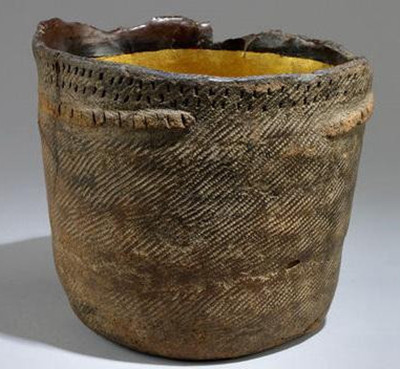It's pretty underwhelming to look at-in fact it's quite dull. It's made of brown-grey clay, a simple round pot about the size of the bucket that children play with on the beach, about six inches high, six inches across at the top, and its got it's got straight sides and a flat base, and it was made about seven thousand years ago in Japan.












